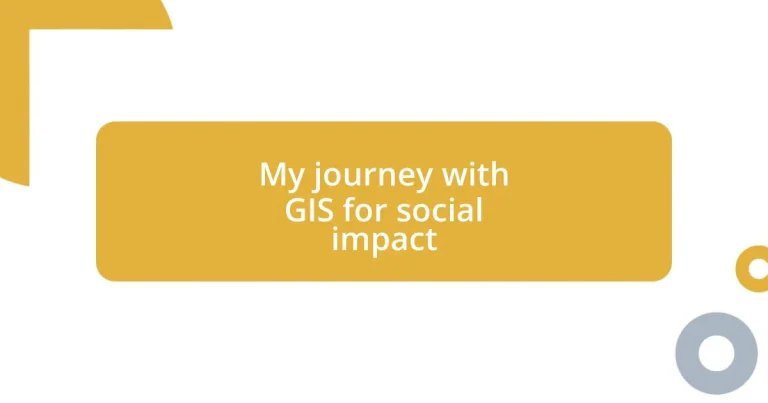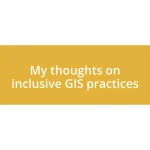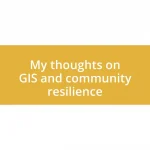Key takeaways:
- GIS combines hardware, software, and data to visualize and address complex social issues, such as food deserts and healthcare access.
- Effective applications of GIS include public health, urban planning, and environmental conservation, demonstrating its versatility in driving social change.
- Community involvement and feedback are essential for building successful GIS projects, ensuring they meet the actual needs and challenges faced by residents.
- Measuring success goes beyond metrics to include the lived experiences of individuals impacted by GIS initiatives, highlighting the importance of qualitative feedback.
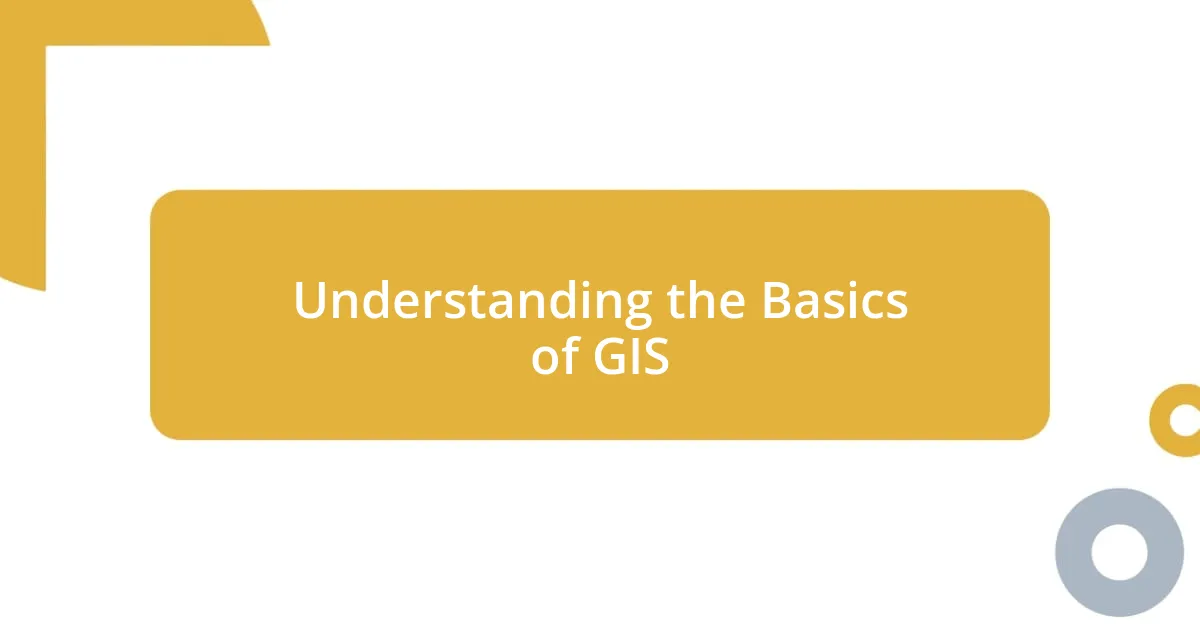
Understanding the Basics of GIS
Geographic Information Systems, or GIS, is all about capturing, managing, and analyzing spatial and geographic data. I remember the first time I visualized a community map; it was exhilarating to see how data could transform into actionable insights that could drive real change. Have you ever wondered how things like public health trends or urban planning decisions are made? That’s the magic of GIS at work.
At its core, GIS combines hardware, software, and data to solve complex problems. I once used GIS to identify food deserts in my city, and it was eye-opening to see just how many neighborhoods lacked access to fresh groceries. This experience made me realize that GIS isn’t just an analytical tool—it’s a lens through which we can better understand societal issues.
Additionally, GIS enables us to create layered maps that show different data sets simultaneously. For instance, overlaying poverty rates with access to healthcare facilities can reveal stark inequalities. Have you considered how powerful it would be to visualize these disparities? It’s moments like these that remind me of the profound impact GIS can have on fostering social awareness and promoting equity.
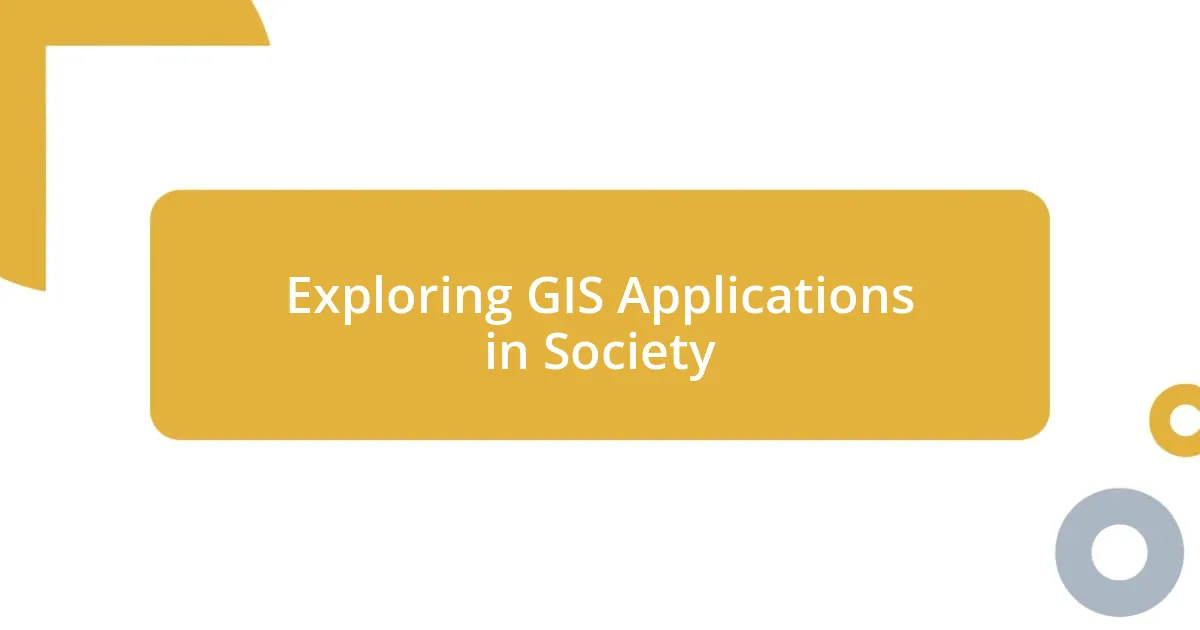
Exploring GIS Applications in Society
When I delve into the various applications of GIS, I often marvel at its versatility across different sectors of society. In my experience, whether it’s tracking the spread of infectious diseases or optimizing public transportation routes, GIS serves as a vital tool for decision-makers. It reminds me of a project I worked on regarding disaster response planning. By mapping out vulnerable communities and their accessibility to emergency services, we created a clearer strategy for resource allocation.
Here are some notable applications of GIS that have made significant impacts in society:
- Public Health: Mapping disease outbreaks to identify hotspots for targeted interventions.
- Urban Planning: Analyzing site suitability for new developments based on environmental data.
- Environmental Conservation: Monitoring land use changes and habitat loss to guide conservation efforts.
- Transportation: Enhancing public transit routes to better serve underserved communities.
- Sociodemographic Studies: Visualizing data to illuminate social inequalities in education, health, and economic opportunities.
Each example reflects how GIS can illuminate complex social dynamics, helping us all contribute to a more equitable and sustainable future.
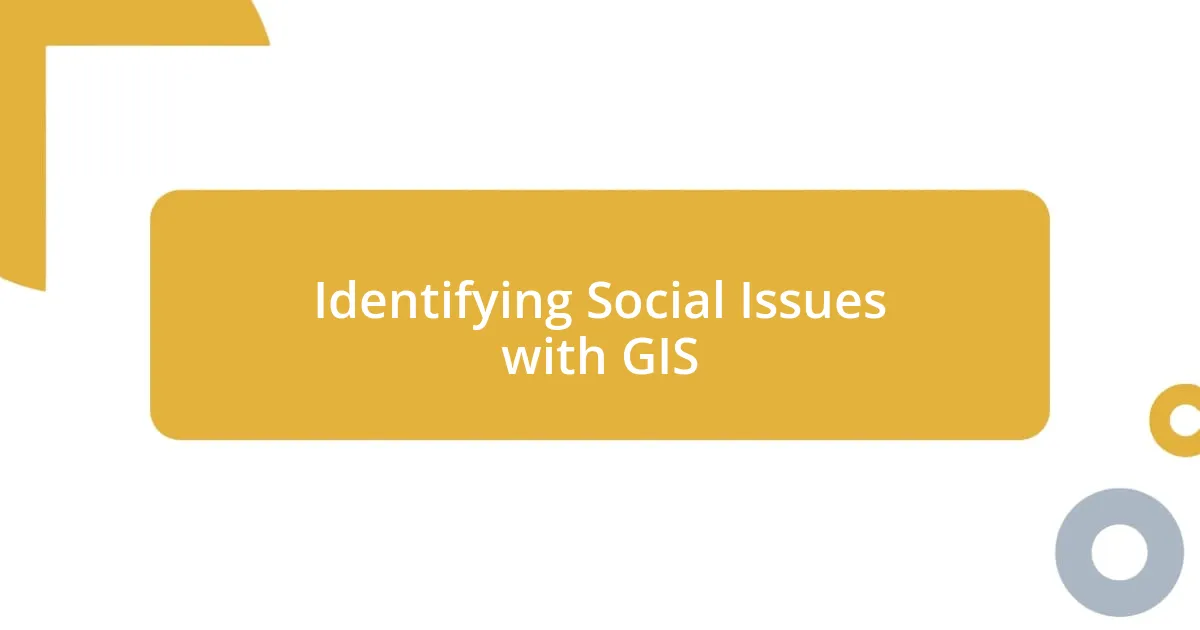
Identifying Social Issues with GIS
Identifying social issues with GIS is an enlightening journey. I recall a specific instance when I used GIS tools to investigate housing inequalities in my community. By layering crime statistics with census data, we could pinpoint areas heavily affected by both issues. It was a moment of clarity—I could see how intertwined these problems were, and it drove home the message that we can’t tackle one without addressing the others.
What truly amazes me is how GIS allows communities to visualize challenges that often go unseen. For example, while volunteering at a local non-profit, we created a map showing unemployment rates juxtaposed with community resource centers. This helped us not just understand the issue but also engage the community directly in the discussion about the support they required. When data becomes visual, it tells a story and motivates action; it’s a powerful realization I’ve had time and time again as I explored social issues through GIS.
Each layer of information we analyze tells us more about the people behind the statistics. I remember working on a project focused on mental health service accessibility. As we mapped the service locations against socioeconomic factors, we uncovered startling gaps in availability for marginalized groups. This revelation propelled us to advocate for better resources, proving that GIS is not just about numbers; it represents real lives and needs that deserve attention.
| Application | Impact |
|---|---|
| Public Health | Identifying outbreaks to target interventions |
| Urban Planning | Mapping infrastructure needs for equitable development |
| Environmental Conservation | Monitoring habitats to guide protective measures |
| Transportation | Designing better routes for accessibility |
| Sociodemographic Studies | Visualizing inequalities to inform policy |
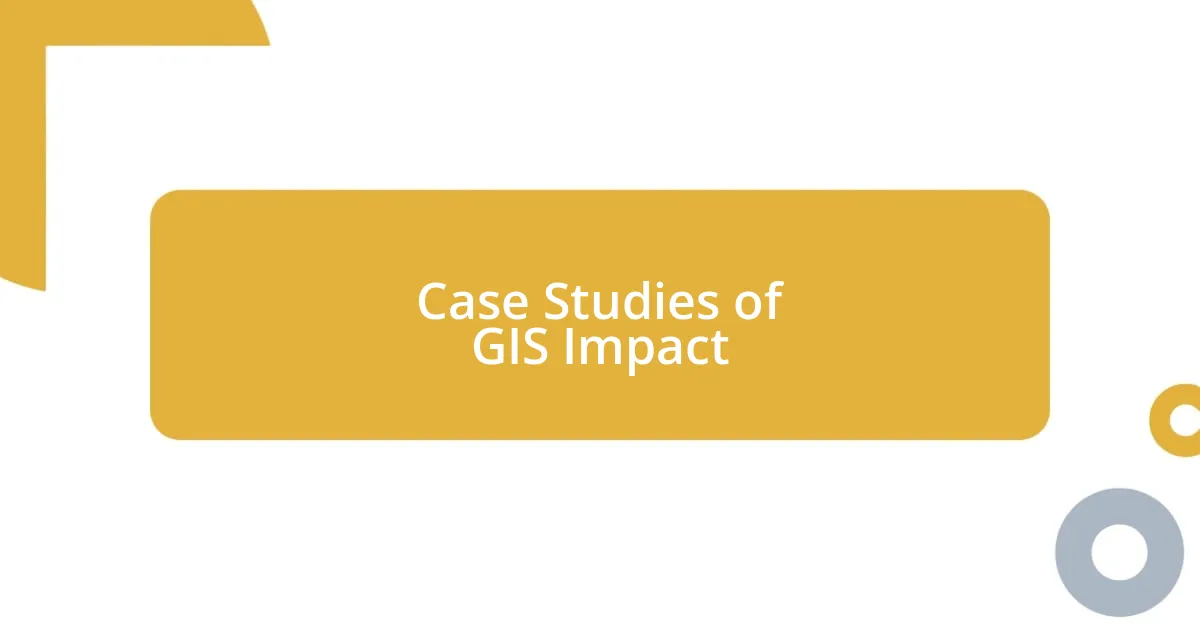
Case Studies of GIS Impact
One particular case that stands out in my journey with GIS was a project that mapped food deserts within urban neighborhoods. We discovered that certain areas, often home to lower-income families, had limited access to fresh produce. It’s heartbreaking to think about how many people were affected by this lack of resources, and it fueled my passion for advocacy. By visualizing these gaps, we were able to rally support for local farmers’ markets and fresh food initiatives, and witnessing the community come together for a shared cause was truly inspiring.
Another impactful experience was geocoding mental health service locations against demographic data. The patterns we observed were shocking—many services were well outside the neighborhoods where need was greatest. I remember feeling a mix of frustration and determination as we presented our findings to local healthcare providers. It made me realize how crucial it is to ensure that all communities receive equitable care, especially when mental health issues can be so stigmatized. How can we claim to provide comprehensive support if access is limited?
And then, there was a project focused on disaster preparedness that hit home deeply for me. By analyzing the locations of at-risk populations in relation to emergency service facilities, we identified significant gaps in service areas. I could almost feel the urgency in the air when we shared this data with local officials. It struck me that, above all, GIS is about more than just numbers; it’s about enabling real change for people who need it most. Each map we created wasn’t just about plotting points—it was about telling stories that drove action.
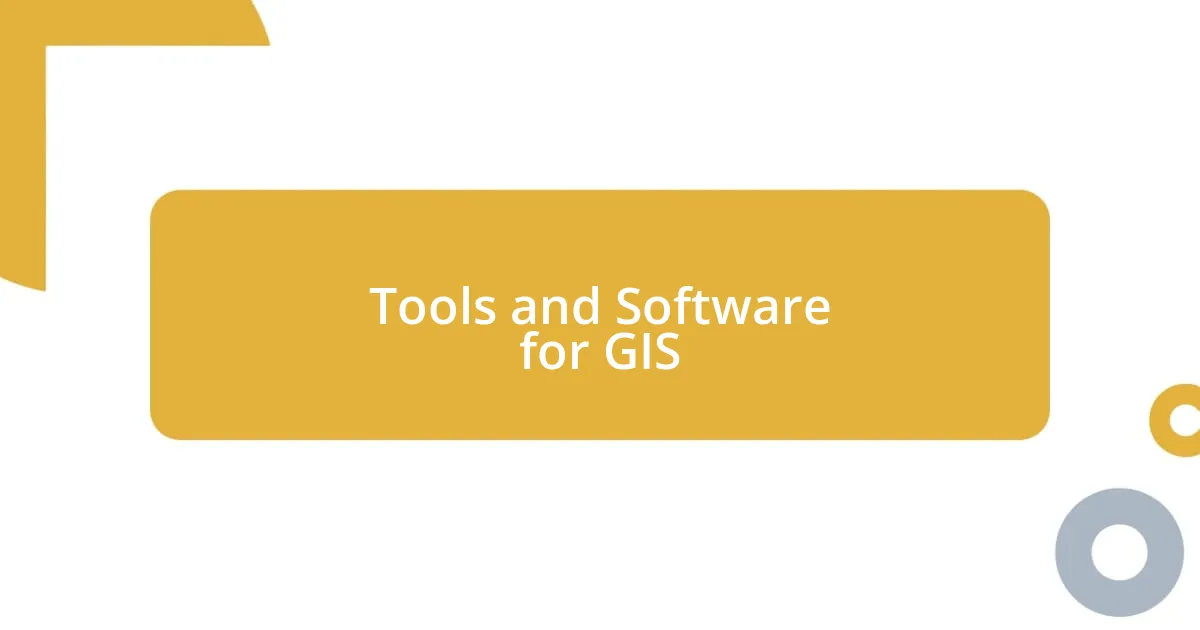
Tools and Software for GIS
When diving into the world of GIS, I found myself leaning heavily on a few essential tools. For instance, ArcGIS has been a cornerstone for many of my projects. Its ability to create detailed maps while integrating diverse datasets allows me to explore social issues from various angles. I can still recall the excitement when I first layered socioeconomic data with environmental factors—it felt like unlocking a new level of understanding.
Another favorite of mine is QGIS, an open-source alternative that encourages creativity without the financial burden. I appreciate how it provides extensive plugins that can expand its functionality. I felt a rush of inspiration while using it for a community mapping project, connecting residents’ voices with visual data. It reminded me that GIS isn’t just a technical skill—it’s a collaborative experience that empowers communities.
I’ve also embraced geographic analysis software like Google Earth Engine, particularly when tackling environmental concerns. The sheer volume of satellite imagery and real-time data available allows for a scale of analysis I previously thought impossible. I remember the awe of visualizing climate change impacts through its platform. The narratives these tools help conjure are compelling—not only do they unveil pressing issues, but they also ignite conversations that can lead to tangible change. Have you ever wondered how a single map could inspire a movement? From my experience, it’s entirely possible.
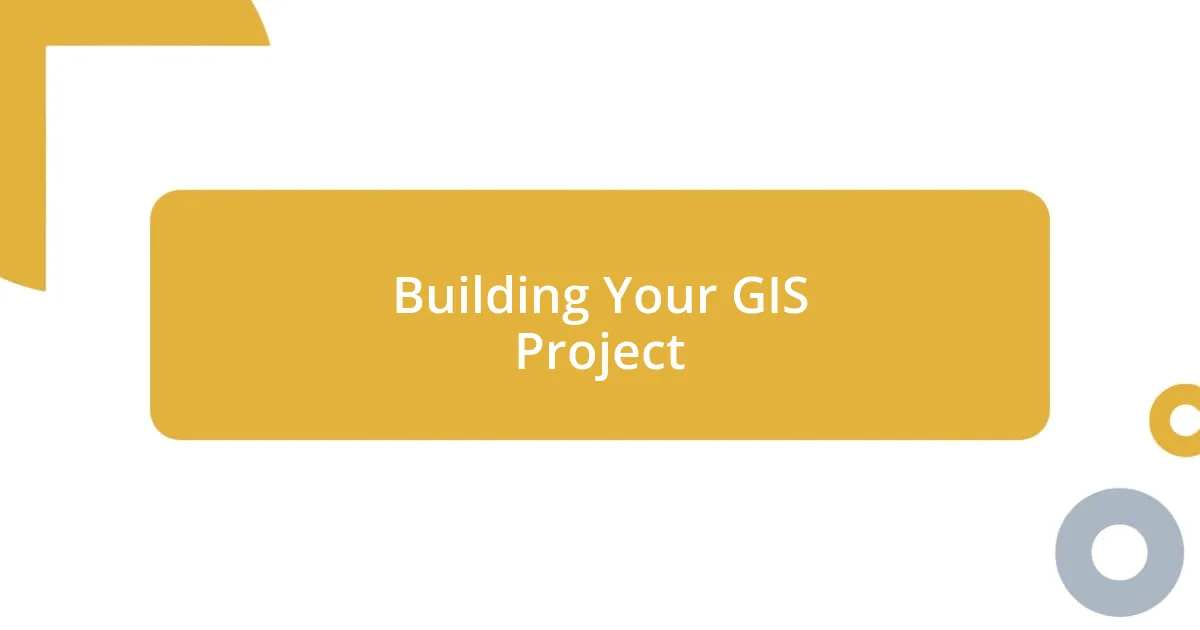
Building Your GIS Project
Building a GIS project starts with a clear purpose—what problem do you want to address? For me, that clarity emerged during a brainstorming session with community members. Their stories revealed gaps in services that I hadn’t initially considered. It became evident that informing and engaging those affected is crucial; after all, their insights are invaluable in shaping our approach. Have you ever thought about how much more effective a project can be when it roots itself in community voices?
Once you’ve established your objectives, the next step is to gather relevant data. In my experience, this is a mix of digging through public records and leveraging local knowledge. I recall spending hours at the local library sifting through documents, but it was worth it. That’s when I stumbled upon demographic data that painted a clearer picture of the challenges at hand. Isn’t it fascinating how the right piece of information can illuminate a path forward?
Lastly, visualization transforms our findings into impactful narratives. I vividly remember creating a series of maps that highlighted disparity in educational resources across the city. Each map told a story that sparked conversations among educators and policymakers. It’s amazing to see how a compelling visual representation can galvanize support and drive initiatives. Have you ever considered how a simple map could become a catalyst for change in your community? In my journey, I’ve discovered that with the right tools and mindset, the possibilities are endless.
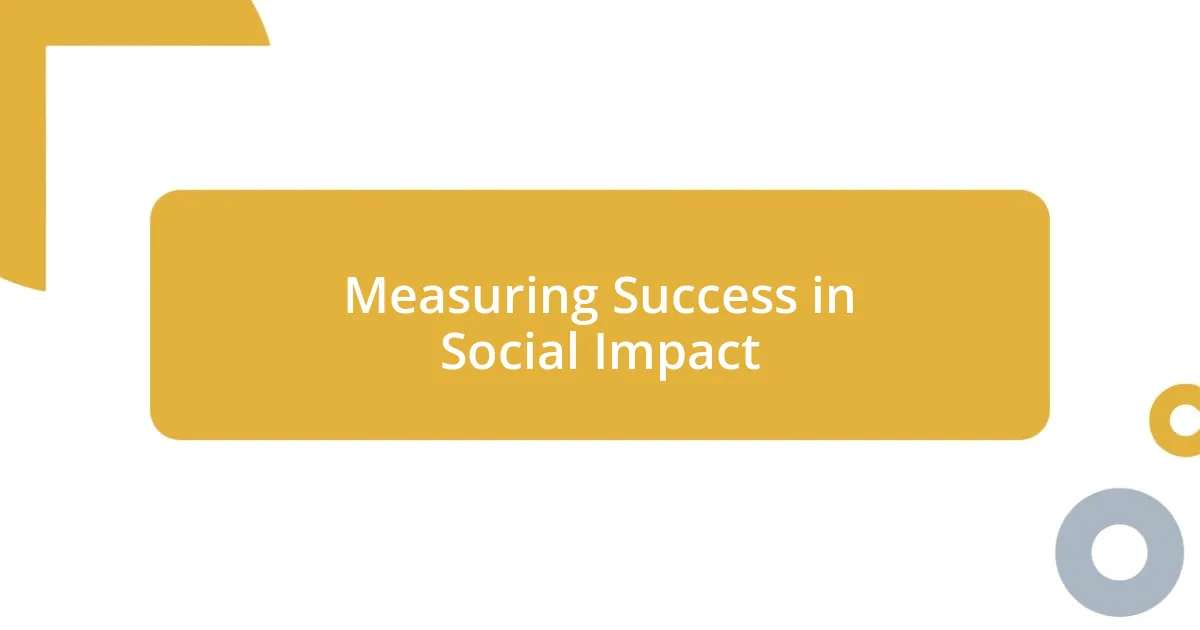
Measuring Success in Social Impact
Measuring success in social impact projects can be a multifaceted endeavor. I often reflect on how success isn’t just about numbers or metrics but also about lived experiences. For instance, during a project aimed at improving public transportation access, I remember receiving heartfelt feedback from community members who felt more connected to opportunities because of our efforts. Isn’t it powerful to think that our work can profoundly change lives in such personal ways?
When I evaluate the impact of my GIS initiatives, I focus on both quantitative and qualitative measures. After a mapping project pinpointing areas needing educational resources, I conducted interviews with teachers who shared how the increased visibility led to more funding and support. Their enthusiasm was palpable, reinforcing my belief that success lies in fostering relationships alongside data analysis. Have you considered how the stories behind the numbers often hold the key to understanding true impact?
Reflecting on the journey, I believe that continuous feedback loops are essential in measuring success. I’ve experienced the value of gathering ongoing community input; it’s like having a compass that guides my projects in real-time. Recently, after implementing suggestions from local residents on a health initiative, we saw improved engagement and participation rates. This taught me that success is not a destination but an evolving process driven by collaboration and responsiveness. Isn’t it remarkable how each project can teach us new lessons about effectiveness and community connection?












